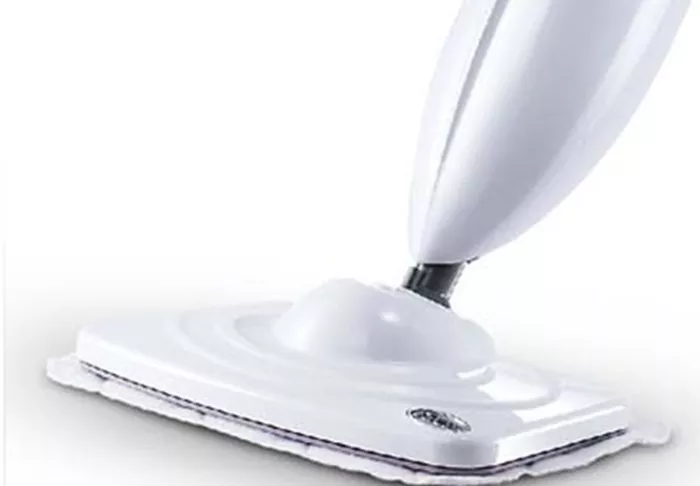Hardwood floors are a timeless and elegant addition to any home. They add warmth, beauty, and value to your living space. However, maintaining hardwood floors can be a challenge, especially when it comes to cleaning. One of the most debated topics in floor care is whether steam mops are safe for hardwood floors. As a professional steam cleaner, I aim to provide a comprehensive and detailed analysis of this issue.
1. Understanding Hardwood Floors and Their Vulnerabilities
What Are Hardwood Floors
Hardwood floors are made from natural wood, which can be solid or engineered. Solid hardwood is made from a single piece of wood, while engineered hardwood consists of multiple layers of wood veneers bonded together. Both types are durable and long-lasting but have unique characteristics that make them susceptible to damage if not properly maintained.
Why Are Hardwood Floors Vulnerable
Hardwood floors are sensitive to moisture, heat, and physical abrasion. Excessive moisture can cause the wood to swell, warp, or crack, while high heat can dry out the wood, leading to gaps and splits. Additionally, harsh cleaning tools or chemicals can strip the protective finish, leaving the wood exposed to further damage.
2. How Steam Mops Work
The Science Behind Steam Mops
Steam mops use heated water to produce steam, which is then released through a mop pad onto the floor surface. The heat and moisture help loosen dirt, grime, and bacteria, making it easier to clean without the need for chemical cleaners. Steam mops are often praised for their eco-friendliness and efficiency in sanitizing surfaces.
Types of Steam Mops
There are various types of steam mops available, including:
Basic steam mops: These produce a steady stream of steam and are suitable for light cleaning.
Advanced steam mops: These offer adjustable steam settings, allowing users to control the amount of steam and heat.
Multifunctional steam mops: These come with additional attachments for cleaning carpets, upholstery, and other surfaces.
3. Potential Risks of Using Steam Mops on Hardwood Floors
Moisture Damage
The primary concern with steam mops is the amount of moisture they release. Hardwood floors are not waterproof, and prolonged exposure to moisture can lead to:
Warping: The wood planks may bend or curl at the edges.
Cupping: The edges of the planks may rise higher than the center, creating a concave shape.
Swelling: The wood may absorb moisture and expand, causing gaps or buckling.
Heat Damage
Dry out the wood: This can lead to cracks and splits over time.
Damage the finish: The protective coating on hardwood floors may peel or bubble, leaving the wood vulnerable to stains and scratches.
Improper Use
Using too much steam: Over-saturating the floor with steam can lead to moisture damage.
Failing to dry the floor: Not wiping up excess moisture after steaming can leave the floor wet for too long.
Using on unsealed or damaged floors: Steam mops should never be used on unsealed, waxed, or damaged hardwood floors, as they can cause further harm.
4. Benefits of Using Steam Mops on Hardwood Floors
Deep Cleaning
Steam mops are highly effective at removing dirt, grime, and bacteria from hardwood floors. The heat and steam can penetrate tiny crevices, providing a thorough clean that traditional mopping may not achieve.
Chemical-Free Cleaning
Steam mops use only water, making them an eco-friendly and hypoallergenic cleaning option. This is particularly beneficial for households with children, pets, or individuals with allergies.
Time-Saving
Steam mops heat up quickly and can clean floors in a fraction of the time it takes to mop manually. They also eliminate the need for rinsing or wringing out mop heads.
5. Best Practices for Using Steam Mops on Hardwood Floors
Check the Manufacturer’s Recommendations
Always refer to the manufacturer’s guidelines for both your steam mop and hardwood floors. Some flooring manufacturers explicitly advise against using steam mops, while others may provide specific instructions for safe use.
Use the Right Steam Mop
Choose a steam mop with adjustable steam settings and a low-moisture output. Avoid using high-powered steam mops designed for heavy-duty cleaning, as they may release too much steam and heat.
Keep the Mop Moving
Avoid leaving the steam mop in one spot for too long. Continuous movement prevents excessive moisture and heat from concentrating in a single area.
Dry the Floor Immediately
After steaming, use a dry microfiber cloth to wipe away any residual moisture. This helps prevent water from seeping into the wood.
Avoid Unsealed or Damaged Floors
Never use a steam mop on unsealed, waxed, or damaged hardwood floors. The steam can penetrate the wood and cause further harm.
6. Alternatives to Steam Mops for Hardwood Floors
Microfiber Mops
Microfiber mops are gentle on hardwood floors and effectively trap dirt and dust. They can be used with a small amount of water or a hardwood floor cleaner.
Hardwood Floor Cleaners
There are many commercial cleaners specifically designed for hardwood floors. These products are formulated to clean without damaging the wood or its finish.
DIY Cleaning Solutions
You can make your own cleaning solution using a mixture of water and vinegar or water and mild dish soap. Always use a damp (not wet) mop and avoid excessive water.
7. Conclusion
The answer to whether steam mops damage hardwood floors depends on how they are used. When used correctly and cautiously, steam mops can be a safe and effective cleaning tool for hardwood floors. However, improper use can lead to moisture and heat damage, compromising the integrity of your floors. Hardwood floors are a significant investment, and proper care is essential to maintain their beauty and longevity. While steam mops can be a convenient and eco-friendly cleaning option, they are not without risks. Understanding the potential dangers and following best practices can help you make an informed decision about whether to use a steam mop on your hardwood floors.
Related topics:

